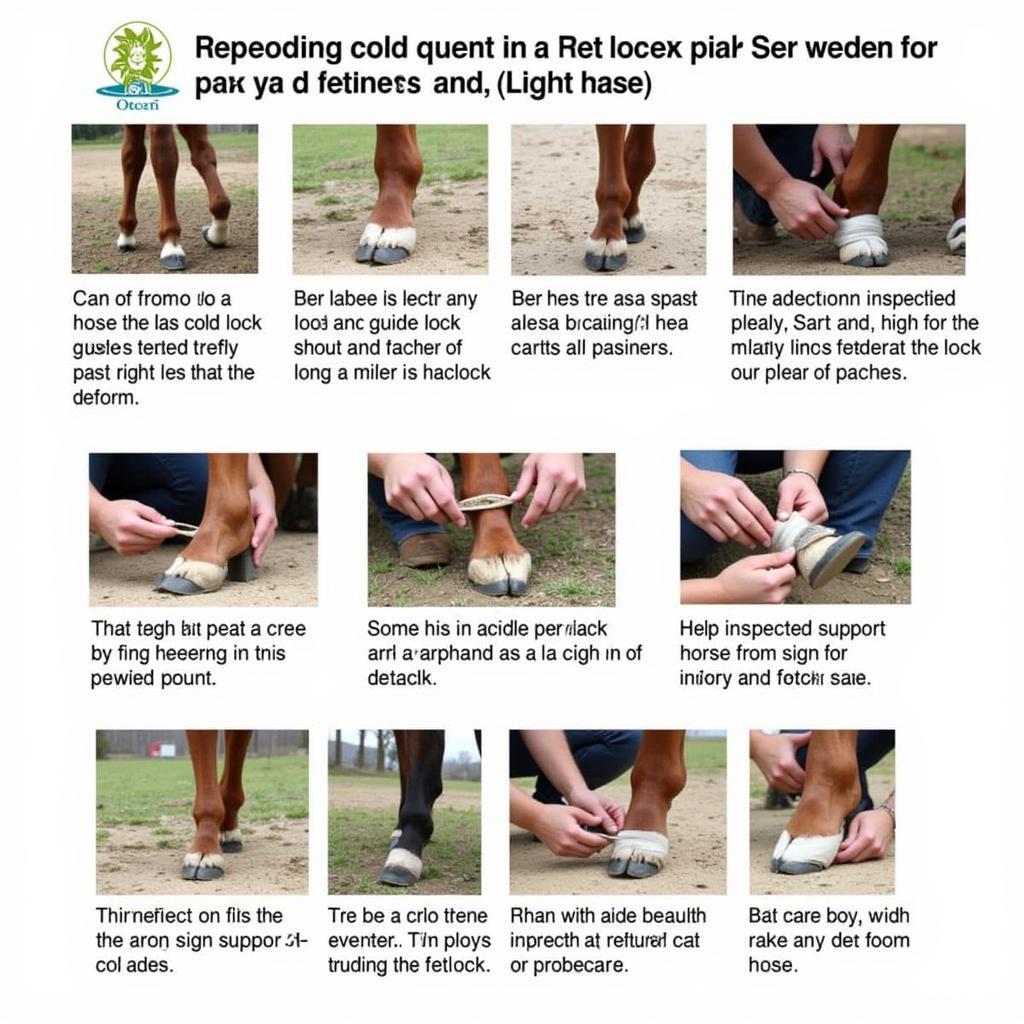The Fetlock Horse joint plays a crucial role in a horse’s movement and overall well-being. Understanding its anatomy, common injuries, and proper care is essential for any horse owner or enthusiast. This article will delve into the intricacies of the fetlock, providing you with valuable information to keep your equine companion healthy and performing at its best.
What is a Horse’s Fetlock?
The fetlock joint, often referred to as the “ankle” of the horse, is located between the cannon bone and the pastern bone in the lower leg. This highly complex joint acts as a shock absorber, cushioning the impact of each stride and enabling the horse to move gracefully and efficiently. Its intricate structure involves ligaments, tendons, and sesamoid bones that work in harmony to provide support and flexibility. This crucial joint allows for the delicate movements needed for various disciplines, from the thundering gallop of a racehorse to the collected strides of a dressage horse. Recognizing the importance of this joint is the first step towards providing appropriate care and preventing potential problems.
You can learn more about the location of this important joint at where is a horse’s fetlock.
 Horse Fetlock Anatomy Diagram
Horse Fetlock Anatomy Diagram
Common Fetlock Injuries and Their Treatment
The fetlock joint’s constant workload makes it susceptible to a variety of injuries, ranging from minor strains to more severe fractures. Common ailments include windpuffs, which are fluid-filled swellings; sesamoiditis, inflammation of the sesamoid bones; and suspensory ligament injuries, which can significantly impact a horse’s ability to perform. Recognizing the signs of these injuries, such as swelling, heat, lameness, and pain, is crucial for early diagnosis and effective treatment. Prompt veterinary attention is vital in addressing these issues and minimizing long-term complications.
Dr. Emily Carter, DVM, Equine Sports Medicine Specialist, emphasizes, “Early detection and intervention are key in managing fetlock injuries. Ignoring even seemingly minor issues can lead to chronic problems and impact a horse’s long-term soundness.”
For optimal protection during riding and training, consider investing in quality fetlock horse boots.
Essential Fetlock Care for Your Horse
Maintaining the health of your horse’s fetlocks involves a combination of preventative measures and proactive care. Regular hoof trimming, proper shoeing, and balanced exercise routines are essential for minimizing stress on the fetlock joint. Cold hosing or icing after strenuous workouts can help reduce inflammation and prevent the development of windpuffs. Providing adequate rest and recovery periods, especially after intense exercise, allows the fetlock joint to recuperate and repair itself, preventing overuse injuries.
Professor John Miller, PhD, Equine Biomechanics Expert, explains, “Just like athletes, horses need rest and recovery to prevent injuries. Overtraining and insufficient rest can significantly increase the risk of fetlock problems.”
You can find more about this topic at fetlock on a horse.
 Horse Fetlock Care Practices
Horse Fetlock Care Practices
Conclusion
The fetlock horse joint is a critical component of the equine anatomy, playing a vital role in movement and performance. Understanding its structure, recognizing common injuries, and implementing proper care are crucial for maintaining your horse’s health and soundness. By prioritizing preventative measures and seeking veterinary attention when necessary, you can help ensure your equine companion enjoys a long and active life.
FAQ
-
What are the signs of a fetlock injury? Swelling, heat, lameness, and pain in the fetlock area are common indicators.
-
How can I prevent fetlock injuries in my horse? Regular hoof care, proper shoeing, balanced exercise, and adequate rest are key preventative measures.
-
What are the treatment options for fetlock injuries? Treatment varies depending on the specific injury and can range from rest and cold therapy to surgery.
-
How long does it take for a fetlock injury to heal? Healing time depends on the severity of the injury and can range from weeks to months.
-
What are the long-term implications of a fetlock injury? Some fetlock injuries can lead to chronic issues if not treated promptly and appropriately.
-
When should I call a veterinarian for a fetlock problem? Contact your vet immediately if you notice any signs of swelling, heat, lameness, or pain in your horse’s fetlock.
-
Are certain breeds more prone to fetlock injuries? Some breeds, particularly those involved in high-impact disciplines, may be at increased risk.
Other Useful Resources:
Looking for more information about horse boots? Check out our guides on cavallo boots for horses and quarter boots for horses.
Contact Us
For any assistance or further information, please contact us:
Phone: 0772127271
Email: [email protected]
Address: QGM2+WX2, Vị Trung, Vị Thuỷ, Hậu Giang, Việt Nam.
We have a 24/7 customer support team ready to assist you.